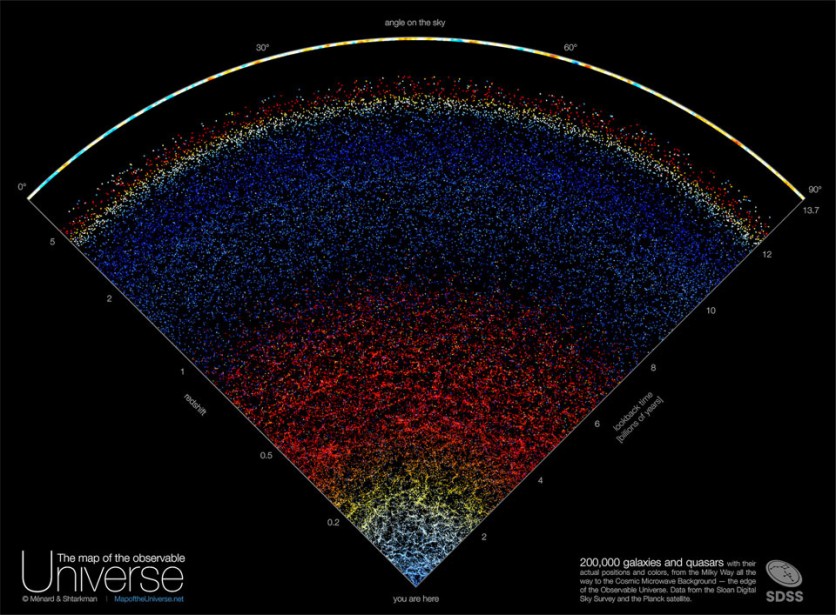Imagine being able to gaze at the very edge of the observable universe and witness a dazzling array of galaxies.
NASA has now made this extraordinary experience possible by releasing an expansive map that showcases the galaxies and quasars observed by the Sloan Digital Sky Survey between 2000 and 2020.
This remarkable map takes us closer to understanding the immense scales that lie beyond our reach.

Map of the Universe
The map, created using data from various sources including the Sloan Digital Sky Survey, Planck, and NASA's own observations, offers a glimpse into the awe-inspiring expanse of the cosmos.
One section of this celestial survey reveals an astonishing 200,000 galaxies and quasars, providing a window into the universe's evolution over the past 12 billion years.
In the illustration, each dot represents a galaxy or a quasar, with the lower portion predominantly filled with galaxies and the upper part featuring distant quasars.
The redness of the dots corresponds to the objects' increasing redshift and distance from Earth. Notably, the map showcases the impact of gravitational forces between galaxies, which have caused the nearby universe to condense and adopt a more filamentary structure compared to the more scattered appearance of the distant universe.
Drifting across the map, our eyes are drawn to the mesmerizing abundance of galaxies, each containing billions of stars. The sheer number and variety of galaxies depicted in this snapshot of the observable universe are truly awe-inspiring.
With each galaxy representing a unique cosmic island, the map underscores the incomprehensible vastness and diversity of our universe.
Embedded within this tapestry of celestial wonders are the enigmatic quasars, the bright cores of distant galaxies. These intense sources of radiation emit colossal amounts of energy, captivating astronomers and fueling their curiosity about the mechanisms behind their brilliance.
Read Also : NASA's James Webb Space Telescope Catches an 'Asteroid Photobomber' Roughly the Size of Rome's Colosseum
Cosmic Questions to Ponder
As we immerse ourselves in the map's grandeur, we cannot help but contemplate the profound questions it raises. How did these galaxies form and evolve? What hidden secrets lie within their celestial domains? What new revelations await us as we continue to explore the cosmos?
Through projects like the Sloan Digital Sky Survey and collaborative efforts between various scientific institutions, our understanding of the universe continues to expand.
The map of the observable universe serves as a reminder of the immense beauty, complexity, and interconnectedness that exists beyond our earthly realm. It invites us to ponder our place in the cosmos and inspires us to venture further into the depths of space.
Related Article : NASA's Hubble Space Telescope Captures 'Butterfly Nebula' In Stunning Motion | Fun Facts About This Beautiful Space Butterfly

ⓒ 2025 TECHTIMES.com All rights reserved. Do not reproduce without permission.




